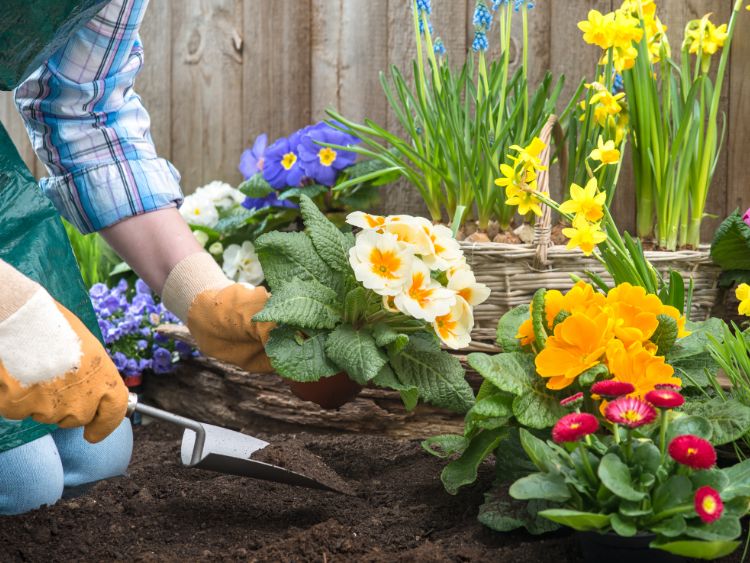Weeds are every garden’s unwelcome visitors that rob your prized plants of nutrients, water, and sunlight. Avoiding chemical herbicides when trying to eliminate them is a major challenge for organic gardens.
However, using natural weed management techniques guarantees your garden is a safe refuge for people, dogs, and beneficial insects.
There are many useful environmentally friendly strategies to battle them. Let’s explore the realm of natural weed control without compromising your organic values.
Understanding Weeds: Know Your Enemy
You must know what you are working with before you properly fight them. Weeds are basically plants that grow where they aren’t needed. They can rapidly take over if not controlled.
Common garden weeds such as dandelions, crabgrass, bindweed, and chickweed have their own special means of spread and survival. Since they are often opportunistic, they grab any open area of ground to grow.
To be able to control weeds’ growth, you must first identify the types living in your garden. Certain weeds, like chickweed, multiply rapidly along the surface.
On the other hand, others, such as dandelions, have deep taproots that make them challenging to completely eliminate. Thus, this step can help you decide on the proper eradication strategy.
Mulching: Your Garden’s Best Friend
This protective process is one of the most efficient available natural weed control strategies. Organic gardeners love this approach for good reason.
In simple terms, mulch is a layer of materials, including compost, wood chips, or straw, spread over the ground. It serves as a barrier, stifling sunlight and preventing weed seeds from growing.
It helps preserve moisture, slowing down erosion. This, over time, raises the soil’s fertility by keeping the ground shaded and cool. It is a must-have in any organic garden as it helps in weed control and soil improvement.
To reduce weeds, apply a thick layer of organic mulch around your plants, roughly two to four inches. Over time, organic ones such as shredded leaves, grass clippings, and bark provide nutrients to the soil, strengthening its structure.
Combining this technique with other ones like hand weeding or hoeing has proven extremely effective in battling weeds.
Remember, not all mulches are the same. Some weeds, like straw, break down rapidly and need regular replacement. Others, like bark, last longer and don’t break down as easily.
To help control weeds, choose a mulch that is fit for your garden and apply it consistently.
Hand Weeding: The Classic Method
Sometimes, this traditional approach is the best one. Hand weeding is among the most efficient techniques of natural weed management, especially for addressing bigger, more consistent ones.
Although it takes some work, it lets you target certain weeds without upsetting your soil or the surrounding plants.
The best time to remove weeds is when the ground is moist after a watering session. Go under the root system of bigger weeds with a weeding instrument or trowel to guarantee eliminating the whole plant.
You can also use a dandelion digger, a specific weeding tool designed for deep-rooted weeds. It helps in removing the roots without leaving any fragments behind.
This approach prevents weeds from setting seed and spreading farther earlier in the growing season.
In short, a good maintenance routine will make your garden tidier and provide your plants with the optimum growth conditions.
The Power of Sheet Mulching
Also called lasagna gardening, this refers to the process of layering organic materials to produce a thick weed-suppressive mat. As the layers break down, this approach smothers current weeds and prevents new ones from germinating, improving the soil.
First, put a thick layer of newspaper or cardboard over the required area. This base layer inhibits sunlight and aids in killing weeds. Next, add a layer of organic materials, such as compost, straw, or grass clippings, achieving a depth of 4 to 6 inches.
The components will break down over time, enriching the soil and providing a healthy growing habitat for your plants.
This process is essential to clear vast amounts of weeds or build new garden beds. Once configured, this set-it-and-forget-it approach requires minimal upkeep.
The secret is to keep the mulch topped off as it breaks down, ensuring the foundation layer is thick enough to obscure all light. This approach benefits organic growers as it controls weeds and produces a better, richer soil.
If you’re not confident you can do this step efficiently, consider calling a gardening service.
Natural Weed Killers: Safe and Effective Alternatives
This is the perfect solution for gardeners who wish to eradicate tough weeds without turning to strong pesticides.
The most commonly used type is a mixture of vinegar, salt, and dish soap. The salt dries the weeds while the vinegar’s acetic acid burns their leaves. The dish soap is just the ingredient that helps the mixture attach to the leaves.
This is an great combo for weeds growing in difficult areas, such as between pave stones or along paths.
Nevertheless, you should use natural weed killers like these with caution. These solutions aren’t selective and will kill any plant they come into contact with, including your beloved garden plants.
Moreover, always apply these remedies on a calm sunny day to minimise drift and enhance their potency. However, you need to exercise patience. This technique is most effective on young delicate weeds and needs to be applied several times to reach the desired results.
Another technique of weed killing is using boiling water. This method damages the plant cells right away and works best on hard surfaces or in fissures where hand weeding is not practical.
Although you need to be cautious to avoid damaging surrounding plants, this is a fantastic chemical-free approach.
Preventive Measures
Stopping weeds from growing in the first place is always the best option. You can decrease your garden’s weed count remarkably by employing preventive actions. This includes keeping bare land covered, planting densely, and maintaining good soil.
You can also crowd out weeds with strong plant growth in healthy soil. In addition, you can provide your plants with a competitive advantage by adding compost or organic matter frequently to enhance the soil’s fertility and structure.
You should also plant densely. Creeping thyme or clover spreads rapidly and creates a natural weed barrier. You can also shade the ground through closely spaced interplanting of flowers or vegetables.
No-dig gardening also helps in reducing weed development. Digging and tilling reveal hidden weed seeds, which grow where they are surfaced. By reducing unnecessary soil disturbance, you lower the possibility of weed invasion.
Conclusion
You can maintain your organic gardening values while keeping your garden at its best by combining the correct set of methods.
From mulching and manual weeding to sheet mulching and natural weed killers, there are many choices that are efficient, green, and simple to apply.
Remember, regular care, a little elbow grease, and some creative preventive actions will keep weeds under control. So, get ready, head out in the garden, and savour the gratification one weed at a time, creating a lovely organic scene.




